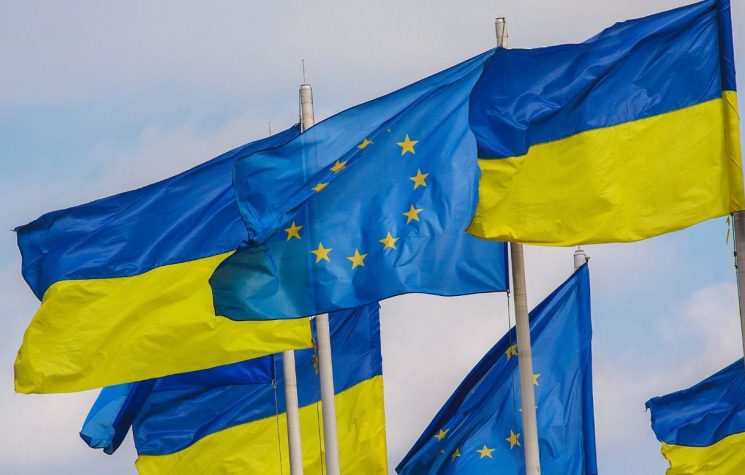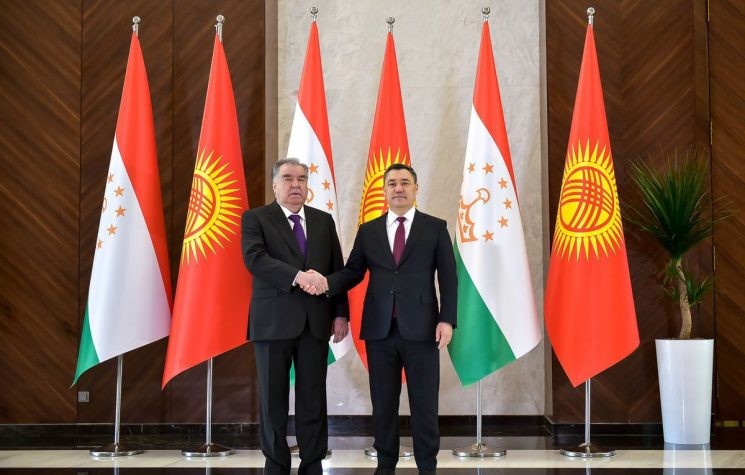While the dogs of war bark, lie and steal, the Russia-China caravan strolls on.
❗️Join us on Telegram![]() , Twitter
, Twitter![]() , and VK
, and VK![]() .
.
Contact us: info@strategic-culture.su
2023 may be defined for posterity as The Year of the Russia-China Strategic Partnership. This wonder of wonders could easily sway under a groove by – who else – Stevie Wonder: “Here I am baby/ signed, sealed, delivered, I’m yours.”
In the first 11 months of 2023, trade between Russia and China exceeded $200 billion; they did not expect to achieve that until 2024.
Now surely that’s One Partnership Under a Groove. Once again signed, sealed and delivered during the visit of a large delegation to Beijing last week, led by Prime Minister Mikhail Mishustin, who met with Chinese President Xi Jinping and revisited and upgraded the whole spectrum of the comprehensive partnership/strategic cooperation, complete with an array of new, major joint projects.
Simultaneously, on the Great Game 2.0 front, everything that need to be reaffirmed was touched by Foreign Minister Sergey Lavrov’s detailed interview to Dimitri Simes on his Great Game show.
Add to it the carefully structured breakdown written by head of the SVR Sergey Naryshkin, defining 2024 as “the year of geopolitical awakening”, and coming up with arguably the key formulation following the upcoming, cosmic NATO humiliation in the steppes of Donbass: “In 2024, the Arab world will remain the main space in the struggle for the establishment of a new order.”
Confronted with such detailed geopolitical fine-tuning, it’s no wonder the imperial reaction was apoplexy – revealed epidermically in long, tortuous “analyses” trying to explain why President Putin turned out to be the “geopolitical victor” of 2023, seducing vast swathes of the Arab world and the Global South, solidifying BRICS side by side with China, and propelling the EU further into a black void of its own – and the Hegemon’s – making.
Putin even allowed himself, half in jest, to offer Russian support for the potential “re-annexation” of country 404 border regions once annexed by Stalin, eventually to be returned to former owners Poland, Hungary & Romania. He added that he is 100% certain this is what residents of those still Ukrainian borders want.
Were that to happen, we would have Transcarpathia back to Hungary; Galicia and Volyn back to Poland; and Bukovina back to Romania. Can you feel the house already rocking to the break of dawn in Budapest, Warsaw and Bucharest?
Then there’s the possibility of the Hegemon ordering NATO’s junior punks to harass Russian oil tankers in the Baltic Sea and “isolate” St. Petersburg. It goes without saying that the Russian response would be to just take out Command & Control centers (hacking might be enough); burn electronics across the spectrum; and blockade the Baltic at the entrance by running a “Freedom of Navigation” exercise so everyone becomes familiar with the new groove.
That China-Russian Far East symbiosis
One of the most impressive features of the expanded Russia-China partnership is what is being planned for the Chinese northeastern province of Heilongjiang.
The idea is to turn it into an economic, scientific development and national defense mega-hub, centered on the provincial capital Harbin, complete with a new, sprawling Special Economic Zone (SEZ).
The key vector is that this mega-hub would also coordinate the development of the immense Russian Far East. This was discussed in detail at the Eastern Economic Forum in Vladivostok last September.
In a unique, startling arrangement, the Chinese may be allowed to manage selected latitudes of the Russian Far East for the next 100 years.
As Hong Kong-based analyst Thomas Polin detailed, Beijing is budgeting no less than 10 trillion yuan ($1.4 trillion) for the whole thing. Half of it would be absorbed by Harbin. The blueprint will reach the National People’s Congress next March, and is expected to be approved. It has already been approved by the lower house of the Duma in Moscow.
The ramifications are mind-boggling. We would have Harbin elevated to the status of direct-administered city, just like Beijing, Shanghai, Tianjin and Chongqing. And most of all a Sino-Russian Management Committee will be established in Harbin to oversee the whole project.
Top flight Chinese universities – including Peking University – would transfer their main campuses to Harbin. The universities of National Defense and National Defense Technology would merge with Harbin Engineering University to form a new entity focused on defense industries. High-tech research institutes and companies in Beijing, Shanghai and Shenzhen would also move to Harbin.
The People’s Bank of China would establish its HQ for northern China in Harbin, complete with markets trading stocks and commodities futures.
Residents of Heilongjiang would be allowed to travel back and forth to designated Russian Far East regions without a visa. The new Heilongjiang SEZ would have its own customs area and no import taxes.
That’s the same spirit driving BRI connectivity corridors and the International North South Transportation Corridor (INSTC). The underlying rationale is wider Eurasia integration.
At the recent Astana Club meeting in Kazakhstan, researcher Damjan Krnjevic-Miskovic, Director of Policy Research at the ADA University in Baku, gave an excellent presentation on connectivity corridors.
He referred for instance to the C5+1 (five Central Asian “stans” plus China) meeting three months ago in Dushanbe joined by Azerbaijan’s president Aliyev: that translates as Central Asia-Caucasus integration.
Miskovic is paying due attention to everything that is evolving in what he defines, correctly, as “the Silk Road region” – interlinking the Euro-Atlantic with Asia-Pacific and interconnecting West Asia, South Asia and wider Eurasia.
Strategically, of course, that’s the “geopolitical hinge where NATO meets the Shanghai Cooperation Organization (SCO), and where the Belt and Road Initiative (BRI) connects with Turkiye and the territory of the EU.” In practical terms, Russia-China know exactly what needs to be done to propel economic connectivity and “synergistic relationships” all across this vast spectrum.
The War of Economic Corridors heats up
The fragmentation of the global economy is already polarizing the expanding BRICS 10 (starting on January 1st, under the Russian presidency, and without flirting-with-dollarization Argentina) and the shrinking G7.
Russian Deputy Foreign Minister Andrey Rudenko – a key Asia hand -, talking to TASS, once again reaffirmed that the key drive for the Greater Eurasia Partnership (official Russian policy) is to connect the Eurasia Economic Union (EAEU) with BRI.
As Russia develops a carefully calibrated balance between China and India, the same drive applies to developing the INSTC, where Russia-Iran-India are the main partners, and Azerbaijan is also bound to become a crucial player.
Add to it vastly improved Russian ties with North Korea, Mongolia, Pakistan (a BRI and SCO member) and ASEAN (except Westernized Singapore).
BRI, when it comes down to the nitty-gritty, is on a roll. I’ve just been to Moscow, Astana and Almaty for three weeks, and it was possible to confirm with several sources that trains in all connectivity corridors are packed to the hilt; via the Trans-Siberian; via Astana all the way to Minsk; and via Almaty to Uzbekistan.
Russian International Affairs Council Program Manager Yulia Melnikova adds that “Moscow can and should integrate more actively into transit operations along the China – Mongolia – Russia route” and accelerate the harmonization of standards between the EAEU and China. Not to mention invest further in Russia-China cooperation in the Arctic.
Enter President Putin, at a Russian Railways meeting, unveiling an ambitious, massive 10-year infrastructure expansion plan encompassing new railways and improved connectivity with Asia – from the Pacific to the Arctic.
The Russian economy has definitely pivoted to Asia, responsible for 70% of trade turnover amid the Western sanctions dementia.
So what’s on the menu ahead is everything from modernization of the Trans-Siberian and establishing a major logistical hub in the Urals and Siberia to improving port infrastructure in the Azov, Black, and Caspian Seas and faster INSTC cargo transit between Murmansk and Mumbai.
Putin, once again, almost as an afterthought, recently remarked that trade through the Suez Canal cannot be considered effective anymore, compared to Russia’s Northern Sea Route. With a single, sharp geopolitical move, Yemen’s Ansarullah has made it graphic – for everyone to see.
Russian development of the Northern Sea Route happens to run in total synergy with the Chinese drive to develop the Arctic leg of BRI. On the oil front, Russian shipments to China via its Arctic coast takes only 35 days: 10 days less than via Suez.
Danila Krylov, researcher with the Department of the Middle East and Post-Soviet Asia at the Institute of Scientific Information on Social Sciences of the Russian Academy of Sciences, offers a straightforward insight:
“I view the fact that the Americans are getting involved in Yemen as part of a great game [scenario]; there is more to it than just a desire to punish the Houthis or Iran, as it is more likely driven by a desire to prevent the monopolization of the market and hinder Chinese export deliveries to Europe. The Americans need an operational Suez Canal and a corridor between India and Europe, while the Chinese don’t want it because these are two direct competitors.”
It’s not that the Chinese don’t want it: with the Northern Sea Route up and running, they don’t need it.
Now freeze!
In sum: in the ongoing, ever more fractious War of Economic Corridors, the initiative is with Russia-China.
In desperation, and no more than an option-deprived, headless chicken victim in the War of Economic Corridors, the Hegemon’s EU vassals are resorting to twisting the Follow the Money playbook.
The Ministry of Foreign Affairs has defined the freezing of Russian assets – not only private, but also state-owned – by the EU as pure theft. Now Russian Finance Minister Anton Siluanov is making it very clear that Moscow will react symmetrically to the possible use of income from these frozen Russian assets.
Paraphrasing Lavrov: you confiscate, we confiscate. We all confiscate.
The repercussions will be cataclysmic – for the Hegemon. No Global South nation, outside of NATOstan, will be “encouraged” to park its foreign currency/reserves in the West. That may lead, in a flash, to the whole Global South ditching the U.S.-led international financial system and joining a Russia-China-led alternative.
The peer-competitor Russia-China strategic partnership is already directly challenging the “rules-based international order” on all fronts – improving their historical spheres of influence while actively developing vast, interconnected connectivity corridors bypassing said “order”. That precludes, as much as possible, direct Hot War with the Hegemon.
Or to put it on Silk Road terms: while the dogs of war bark, lie and steal, the Russia-China caravan strolls on.














































